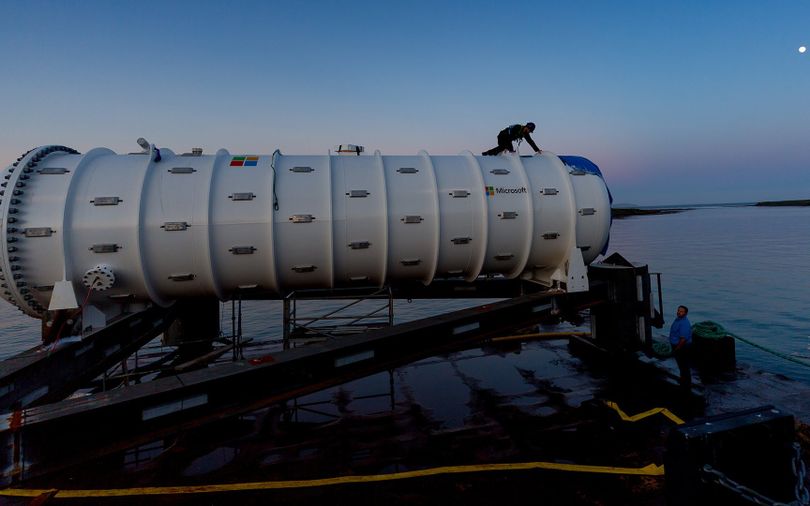
Inside Microsoft's ambitious plan to build underwater data centres


Data centres are now going under water. Tech giant Microsoft says it is leveraging technology from submarines and working with marine energy firms to develop a breed of submersible data centres that can offer cloud services to coastal cities.
Microsoft said in a blog post that as part of Project Natick, it is currently testing the self-sufficient data centres via a shipping container-sized model that is currently processing workloads while sitting on the coast of Scotland’s Orkney Islands.
The Northern Isles data centre is 40-feet long, contains 12 racks of servers amounting to 864 units, and comes designed with its own cooling solution.

"The data centre was assembled and tested in France and shipped on a flatbed truck to Scotland where it was attached to a ballast-filled triangular base for deployment on the seabed," Microsoft said in the blog post.
The company said that the deployment of the Northern Isles data centre at the European Marine Energy Centre is indication that one day, such data centres can be custom-ordered in sizes and easily deployed.
“That is kind of a crazy set of demands to make,” said Peter Lee, corporate vice president of Microsoft AI and Research, who leads the New Experiences and Technologies, or NExT, group. “Natick is trying to get there.”

Microsoft said that Project Natick started as an out-of-the-box idea to accommodate the exponential growth in demand for cloud computing infrastructure near population centres.
"More than half of the world’s population lives within about 120 miles of the coast. By putting data centres in bodies of water near coastal cities, data would have a short distance to travel to reach coastal communities, leading to fast and smooth web surfing, video streaming and game playing as well as authentic experiences for AI-driven technologies," the company explained in the blog post.

Lee said that delivery of AI currently depends on the cloud.
“If we can be within one internet hop of everyone, then it not only benefits our products, but also the products our customers serve,” he added.
The company also said that the Northern Isles data centre runs on renewable energy.

"The European Marine Energy Centre is a test site for experimental tidal turbines and wave energy converters that generate electricity from the movement of seawater,” the company explained. “Onshore, wind turbines sprout from farmers’ rolling fields and solar panels adorn roofs of centuries-old homes, generating more than enough electricity to supply the islands’ 10,000 residents with 100 percent renewable energy. “
It said that a cable from the Orkney Island grid sends electricity to the data centre, which requires just under a quarter of a megawatt of power when operating at full capacity.
Last month, the company said that it was adopting a strategy of conservation in an effort to lure more customers to its cloud business at a time when it is locked in a battle of supremacy with rivals Amazon Web Services and internet giant Google.

According to a Bloomberg report, the tech giant has said that it runs four popular applications in its cloud data centres that help the company reduce energy usage, in a sharp contrast to high power consumption of enterprises that run their own data centres.
The report further said that Microsoft had tested its Azure computing and storage services, along with Exchange email and SharePoint collaboration software, to check the reduction in energy usage.
The company said that the test results varied, with smaller systems in companies showing energy savings from 22 to 93%.

According to the report, the Nadella-led firm has been buying renewable energy to run its data centres to reduce energy usage, with the help of AI-driven chips that drive traffic to different servers, depending on workload.
